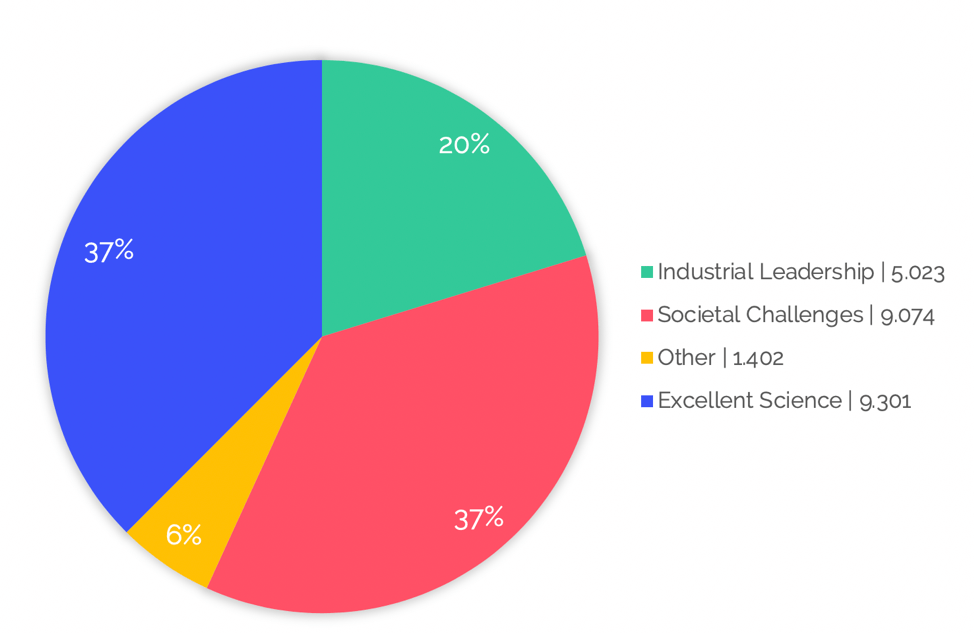Home > Insights > Market Research & Trend Analysis > EU Policy Initiatives Driving Innovation
European Policy Initiatives Driving Innovation
January, 2019

The European Commission began exploring economic stimulus options in 2008 in response to reports from the government that indicated a slowdown in the manufacturing sector. What resulted was a 2014 policy initiative called HORIZON 2020.
Key Enabling Technologies
The European Commission, the governing body of the European Union, is responsible for promoting the interests of the member states of the European Union (EU). Among other things, it has identified jobs, growth and investment as a critical priority.
Starting in 2009, the Commission began its focus on stimulating investment in new technologies as a way to strengthen its industrial base with an emphasis on commercialization – “turning science into technology ”. In support of its mission, the Commission has identified a need for the EU to invest in “Key Enabling Technologies” (KET) that would help shape the technology landscape and drive innovation and investments in R&D through 2020. These Key Enabling Technologies include:
- Advanced Manufacturing Technologies
- Advanced Materials
- Industrial Biotechnology
- Micro & Nanotechnology
- Photonics (science and technology of light generation, detection and management)
These KETs have been identified as the “indispensable technology building blocks, with the potential – especially in combination – of unlocking innovation, providing added value and underpinning a wide range of product applications in strategic European value chains.” At the time, the European Commission recognized the global market potential relative to its own weakened ability to support the demand combined with regional growth in Asia’s patent landscape, the European Commission identified the need for strategic investment to drive innovation in the region.
The Commission consequently established a new program called the Research and Innovation Framework (also known as “Horizon 2020”), which provides approximately 80 billion Euro of funding over 7 years (2014 to 2020), 13.6 billion Euros of which is dedicated to KETs.
Horizon 2020 Funding Allocations Over 7 Years (Figure 1)

Horizon 2020 Investment Allocations over 3 Years
Based on the 2018 report issued by the European Commission , below are key statistics for the Horizon 2020 program has thus far:
- 115,235 proposals submitted
- 13,900 grants signed, representing 12.6% acceptance rating
- Committed funds of 24.8 Billion Euro
- 38% of applications came from higher education; 36% came from private organizations
The charts below demonstrate the funding allocation by the top four Horizon 2020 priorities:
- Societal Challenges (Health, Energy, Transport, Food & Bioeconomy, Climate, Security, Inclusion)
- Excellent Science (European Research Council, Marie-Sklodowska-Curie, Research Infrastructure, Future & Emerging Technology)
- Industrial Leadership (Information & Comm Technologies, Key Enabling Technologies, Space, Innovation in SMEs, Access to Risk Finance)
- Other (Eurtom, Spreading Excellence, Fast-track, Science for Society)
Horizon 2020 Investments in 3 Years: 2014-2016 (Figure 2)

The largest grant awards were made in the areas of Societal Challenges – with Health, Energy, Transport, Food/Bioeconomy and Climate receiving the lion’s share of the funding. Industrial Leadership (including Key Enabling Technologies) came in second – with KETS being awarded 1.512 billion Euro in funding awards.
The highest number of applications per EU nation came from the UK, Italy, Germany, Spain, France and the Netherlands. Whereas the highest number of applications from non-EU countries came from the US, China, Canada, Australia and South Africa.
Insight
It is difficult to measure the impact of the Horizon 2020 program given its nascency. However, with the level of funding made available by the EU, there is a strong argument to made that the EU is well on its way to assist its member countries in igniting innovation through discovery and potentially driving economic improvements for not just those in the region, but rest of world too.
Given the on-going pace of technology innovation and the intersection of science and technology to drive better outcomes, improve the rate of drug discovery, provide enhanced therapies to target disease at its genetic state – augmented by the funding support offered through Horizon 2020, the future looks promising.
By: Kiran Chin


